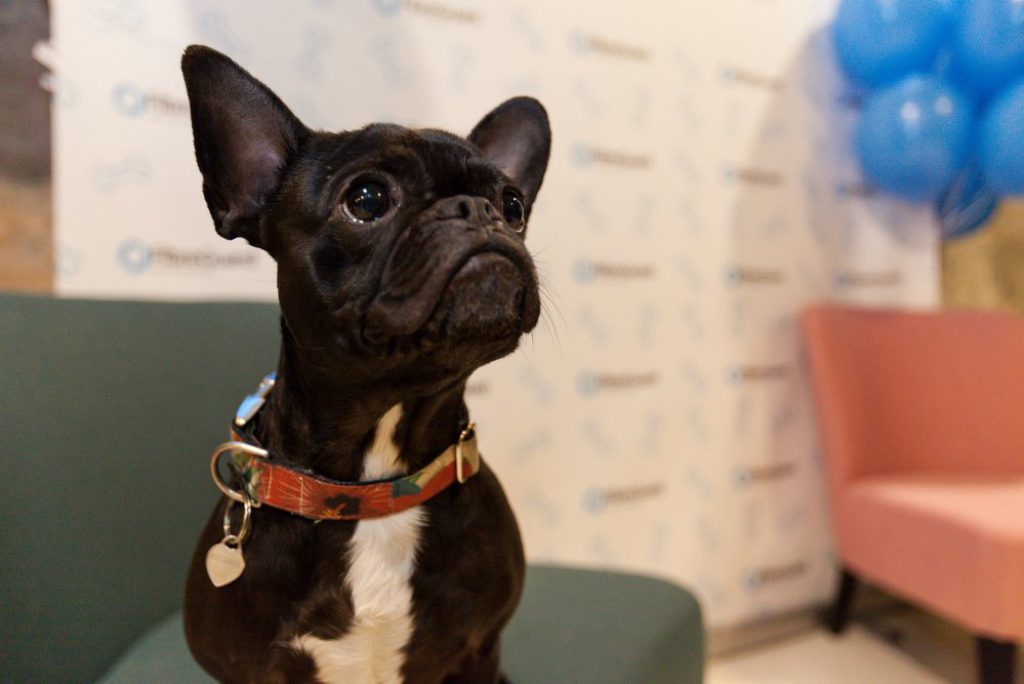What upholstery fabrics are best for when you have a dog?
What furnishing fabrics are best for when you have a dog? It’s a question we get asked a lot, which is understandable. People come to us for advice about upholstery techniques, drapery fabric, textile design, and everything in-between, so why not this too?
In this article we dive into the world of upholstery and dogs, with some extra eye candy from our Dogs&Dinner event in Barcelona!
What Barcelona, dog hair and sofa fabric have in common
The Dogs & Dinner event, facilitated by the Lamadrid group, took place in Barcelona because Barcelona is beautiful. The city provided a fabulous backdrop to a unique event celebrating our furry friends in an unforgettable encounter that, ahem, left its mark.
Aside from a stellar opportunity to hug famous dogs, we were also looking for a way to highlight the pet-friendly properties of our fabrics, and this idea won paws-down because it was so fun.
Along with their entourages, we had the opportunity to meet Eddie the Jack Russel, Sushi Puppie and Brego & Nami, among many others!

Eddie, a Jack Russell from Barcelona
Why are FibreGuard upholstery fabrics the best choice for homes with dogs?
FibreGuard's stain-resistant upholstery supports stress free living, no matter where it might take place.
We love pets, so we make sure to include the needs of their owners in every new fabric collection that we design. Strong and durable upholstery fabrics are one way that we achieve this goal. However, of course, even though FibreGuard fabrics are durable, they’re not completely indestructible: no fabric can withstand heavy or sustained scratching.
Related read: Have you seen Tanja Van Hoogdalem’s fabulous DIY dog bed made with FibreGuard fabrics?
Why Should Dog Owners Invest in Performance Furnishing Fabric?
Investing in our performance upholstery is an excellent decision for any dog owner. It will help your furniture withstand the challenges that come with having dogs at home—such as pet hair, food and drink stains from water or other liquids, jumping onto couches or chairs in celebration (or to hide): the list goes on.


Miss Sushi Puppie, a lovely French bulldog and pug mix from Barcelona.
Can dogs really damage your furniture?
The answer is yes.
While your dog may not be able to completely destroy your furniture in one sitting, they can do some serious damage if left alone for too long with it. Your dog’s claws are pretty sharp! They can easily puncture thin fabrics and even rip through heavier ones if they have enough time and energy.
Scratching and chewing are natural reflexes for animals, but with proper training they can be discouraged. Again, no fabric is immune to heavy or repeated scratching.
Do Dogs Prefer Certain Types of Furniture to Chew or Scratch On?
Some dogs may be more prone to chewing or biting certain objects, including furniture. It's important to provide your dog with appropriate chew toys and redirect any destructive behaviour away from your upholstery.
To prevent your dog from damaging your furniture, ensure they have plenty of chew toys and exercise to keep them mentally and physically stimulated. By providing them with alternative outlets for their energy and chewing needs, you can help keep your furniture safe and intact.

Related read: Are white couches a bad idea?

TECHNICAL SPECS TO LOOK FOR IN DOG-PROOF UPHOLSTERY FABRIC
Here are three textiles tests that an upholstery choice needs to ace in order to be great for homes with dogs:
- Tensile strength (ISO 13934-1) and Tearing strength (ISO 13937-3). Fabric tensile properties testing measures the force needed to break a piece of fabric and shows how strong it is compared to other fabrics of its kind. If a fabric is made of fibres that stretch out easily, it will be more likely to show wear and tear after repeated use. The tensile strength test measures the fabric’s strength and percentage of elongation until rupture (mainly for upholstery fabrics). The tearing strength test measures the amount of force needed to tear the fabric (mainly for upholstery fabrics).
- Seam slippage (ISO 13936-2). The seam slippage test measures the fabric’s movement at the seam (mainly for upholstery fabrics). Seam slippage is the separation or pulling apart of yarns in a fabric usually along a sewn seam or join. Seam slippage usually occurs on joins that are subjected to heavy load and pressure such as seat cushions and arm rests. Certain furniture styles put more stress on fabric seams such as tub chairs and furniture with a fixed back or seat cushions.
- Dimensional stability in fabrics (ISO 3759:2011) Dimensional stability refers to how stable a piece of fabric is over time. If it shrinks or stretches out of shape easily, it won't last as long. That's why this test is important when choosing upholstery fabrics for your home; you want something that'll stand the test of time without shrinking away from its original shape and size. If you stretch the fabric out from its natural state, then it will return back to its original size after being released - this property is what we call "resilience".
Durable upholstery designed with a love of pets
In conclusion, FibreGuard's stain-resistant fabrics are designed to withstand the challenges that come with having dogs, such as pet hair and food or drink stains. While no fabric is completely indestructible, FibreGuard fabrics offer durability and strength to minimise damage.
By choosing our long-lasting upholstery fabrics, you can ensure your furniture remains in excellent condition while enjoying the company of your furry friends.